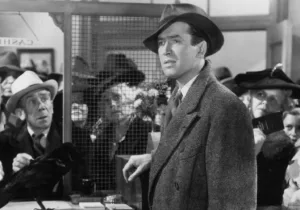On Monday, President Trump named Army Lt. Gen. H.R. McMaster as his new National Security Advisor, replacing the recently ousted Lt. Gen. Michael Flynn.
Here are ten things you should know about the role and history of the National Security Advisor:
1. National Security Advisor is the informal title for the Assistant to the President for National Security Affairs (APNSA). Although the APNSA has been the official title since the 1970s, the position is most often referred to as the “NSC advisor” or National Security Advisor (NSA). (Throughout the rest of this article, the position will be referred to by the abbreviation NSA.)
2. The National Security Act of 1947, which established the National Security Council (hereafter “Council”), makes no mention of the position of National Security Advisor. The only position outlined for the Council is “Executive Secretary.” It wasn’t until 1952 that Eisenhower appointed Robert Cutler to take the role of “Special Assistant to the President for National Security Affairs” to oversee the Council. Since then every president has appointed someone to serve as a NSA.
3. The role of NSA has few legal or statutory constraints. Each president gets to determine what the role will entail and how it will operate. In fact, the position is so fluid that there is no consensus on how the title should be spelled. (In their memoirs, Presidents Nixon, Kissinger, and Carter, and NSC advisors Zbigniew Brezinski and Robert McFarlane use “adviser,” while Reagan, Bush, Clinton, and Scowcroft prefer “advisor.”)
4. Although the requirements for the position vary from president to president, some responsibilities that more recent NSC advisors have taken include:
- Serving as a source of personal advice and counsel to the president
- Serving as a channel for information during situations of crisis
- Being a conduit for written information to and from the other principals within the Council
- Organizing the president’s daily national security briefing
- Providing day-to-day staff support to the president on national security matters
5. After the Iran-Contra scandal, which involved several members of President Reagan’s Council, there was a failed attempt to amend the National Security Act of 1947 to require Senate confirmation of the NSA and public testimony from the NSA before Congress. This change would have radically altered the role of NSA. As Stephen J. Hadley, former National Security Advisor under President George W. Bush, explains, implementing such requirements would have undermined the function of the NSA role:
The position is one of trust and confidence. If a President thought that what he or she shared with the National Security Advisor could be compelled in public testimony, the President would look elsewhere for a national security and foreign policy confidante. Indeed, it would raise a Constitutional issue of separation of powers. Without a National Security Advisor and a National Security Council staff reporting only to the President, it is difficult to see how the President could perform the duties and fulfill the responsibilities given to the President by the Constitution in the area of national security and foreign policy.
6. Henry Kissinger, who served as NSA for President Nixon from January 20, 1969 to November 3, 1975, was arguably the most powerful and influential NSA in American history. Kissinger even held the position of NSA after he was appointed Secretary of State. (President Ford kept Kissinger as Secretary of State, but replaced him as NSA with his deputy, Brent Scowcroft.)
7. In 1977, President Carter’s advisor, Zbigniew Brzezinski, was the first NSA to be elevated to cabinet-level status. President Reagan demoted the NSA from cabinet-level status and subordinated the role to the Secretary of State.
8. Brent Scowcroft is the only person to serve as NSA for two different administrations (President Ford and President George H.W. Bush) and as Deputy NSA under President Nixon.
9. During the Reagan administration, Colin Powell became the first African American to serve as NSA. Condoleezza Rice became the first woman to serve as NSA, under President George W. Bush. To date, the only other woman to serve in that role has been Susan Rice, the fourth and last NSA for President Obama.
10. At 24 days, Michael Flynn had the shortest tenure of any NSA in history. At 2,478 days (roughly 6.8 years), Henry Kissinger had the longest. The average is about 2.6 years.
—
Joe Carter is an adjunct professor of journalism at Patrick Henry College, an editor for several organizations, and the author of the NIV Lifehacks Bible.
Photo Credit: Lt. Gen. H. R. McMaster speaks to students, staff, and faculty during a visit to U.S. Naval War College in Newport, RI on March 22, 2016. U.S. Navy photo by Chief Mass Communication Specialist James E. Foehl, via Flickr.







 Live in the DC area? Sign-up for Providence's in-person events list!
Live in the DC area? Sign-up for Providence's in-person events list!